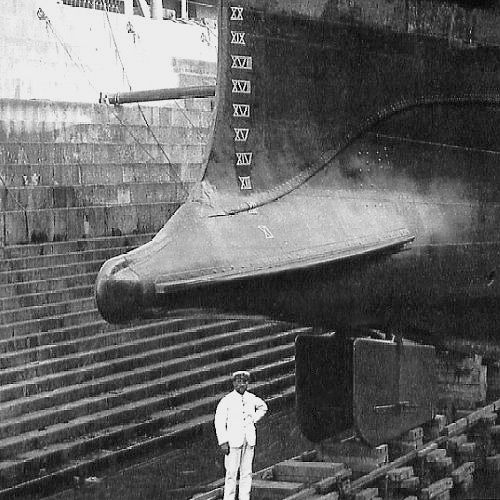H.M.S. Polyphemus (1881), build notes All comments and suggestions welcome.
Although I could just post pics and notes on each completed stage I am attempting to record a more complete process (including occasional setbacks) to show the development of an unusual non-kit model. Hopefully this R&D effort may be of some use to others. Previously I have only done bulkheads in ply or thinner ABS.
For anyone interested in building this ship it would of course be so much easier to have a higher fixed freeboard and just go ahead mounting the motors shafts and electrics as normal. However, I am game for a good challenge. It does mean though I tend to spend more time in research, trialling and jigs etc, than construction.
Figuring out how to create the next bit is half the fun.
So please bear with me. I estimate this one could take around six months, bearing in mind it is 1/60 so just about all fittings etc will have to be scratch made.
Thinking ahead
Dry dock view of the ram with torpedo tube bow cap, also showing the twin forward rudders for close manoeuvring inside hostile harbours.
I understand they were not very effective, but that was generations before bow thrusters were invented.
 Author
Topic: Bob's H.M.S. Polyphemus (Read 263610 times)
Author
Topic: Bob's H.M.S. Polyphemus (Read 263610 times)



